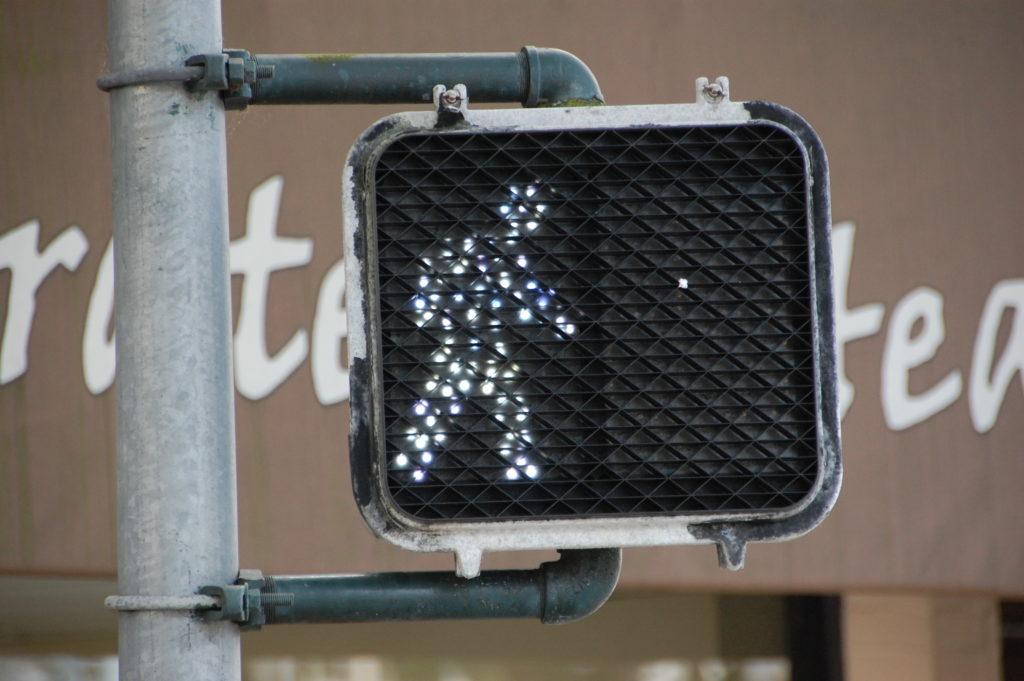LATERAL STABILITY IN THE FEET
DUCK WALKING
EXPERIENCE COMPRESSION LOADING VS. TENSEGRITY BIOMECHANICS
ANATOMY OF LS IN THE FEET
LATERAL STABILITY IN THE FEET
When we tip to the side, as we near the point where we will tip over, the outside edge of the foot aggressively extends into the ground. This automatic action is an excellent example of a postural reflex consisting of dedicated functional and structural attributes. This action is our body’s ability to shift the point of contact with the ground as far laterally as possible, maximizing the body’s potential to push our mass back to our gravitational midline, preventing spilling over to the side. It is our “last-ditch” tactic before falling over. If the bones of the foot are aligned for this tactic, they form a stiff purely compressional structure with no shock absorption. This can be experienced by loading one’s weight onto the outside edge of the foot and noticing how stiff that structure feels.
The video below demonstrates how the loading (pressure) changes as this reflex “kicks in”:
Many thanks for the donation of graphics assistance to Timothy Zgraggen
LinkedIn: https://www.linkedin.com/in/tim-zgraggen-83717b17/
Website: https://www.bigpixels.tv/
Whereas foot dynamics discussed in the other sections are well-grounded in the mechanics of Tensegrity, in lateral stabilization the body forgoes Tensegrity to utilize the advantages of compressional loading. If we had shock absorption and energy collection/return built into this system, we would be unable to push back as aggressively as possible – our response would be “squishy”. Therefore the action of lateral stabilization is purely compressional. This compressional stance, where the bones in the feet stack like bricks in a wall, is the only example of classical, compressional biomechanics in our bodies known to this writer.
This compressional loading extends upward from the feet through our entire core. When a foot “locks” in this lateral stabilization pattern, our whole core structure also locks up. This makes sense, as when we are about to tip over to the side any part of our structure that wasn’t stiffened would continue to tip. Therefore, when this dynamic is in play there is compressional loading from the bottom of our feet to our skull. The Temporal/Parietal suture in the skull acts as a “vent” for the compressional shock waves that intentionally do not diffuse through the Tensegrity mechanism of our bodies. This statement can be verified by examining the Temporal/Parietal suture, which looks more like a slide than the other sutures in the cranium. The video in this section discusses this:
HEAD

DUCK WALKING
If we employ our lateral stabilization mechanism for walking by everting our feet, we forgo the dynamics of Tensegrity for compressional loading, taking on the wear and tear associated with compression. Turning the foot out enables us to walk by falling forward, which is a common gait dynamic seen in developed societies.
These links discuss attributes of this statement:
STANDARD OF CARE IN FEET
BUILT ENVIRONMENT
WALK SIGN CAMPAIGN
It is common when standing for long periods for people to shift their weight onto this compressional loading mechanism on the outside of the feet. It is a static stance which seems to make more solid contact with the ground and gives the impression that it takes less effort. Loading on the outside of the feet can also support feelings of greater security as it gives the impression of being more stable – providing solid contact with the ground, and it is routine to observe this pattern in people who feel insecure or unsupported. However, by side-stepping the dynamic mechanisms of the core for purely compressional loading through the feet, we are actually putting wear on our structure which eventually leads to inflammation and joint degeneration.
Lateral Stability emerges from the integration of the Babinski, Leg Cross Flexion, and Gallant Developmental Reflexes.
EXPERIENCE COMPRESSION LOADING VS. TENSEGRITY BIOMECHANICS
Other than in the lateral stabilization mechanism of the feet, it is challenging for this writer to identify other examples of compressional loading the body. The Tensegrity mechanism is almost universally present. It is simply a matter of loading your body weight onto the outside edge of your foot to experience this shift in biomechanics. If you try this take note of your vision. In Gait dynamics the contralateral eye becomes dominant, whereas, in Lateral Stabilization dynamics, the homolateral eye is dominant. This is a purely biomechanical reflex response. Clarifying the role of this biomechanical tool facilitates more intentional use and avoidance of misuse. Postural Extension is also compromised, notice how erect your posture feels in bilateral stance, and then pronate the feet or load onto the outside edge. This is discussed further in the section on the LOCOMOTIVE CORE.
Discussion of Lateral Stabilization in the Locomotive Core of our bodies:
LATERAL STABILIZATION
ANATOMY OF LATERAL STABILITY IN THE FEET
There is a more complete description of the anatomy and physiology of feet here:
ANATOMY AND PHYSIOLOGY OF FEET
META READING
An overview of the foot training protocols available on this website:
FOOT STRUCTURE AND FUNCTION
An overview of foot structural and functional issues and means to optimize how we use our feet:
FEET
An overview of the core physiological structure and functions of which feet are an essential attribute:
LOCOMOTIVE CORE
and a discussion of human neurophysiology dissected by physiology:
THE FOUR CORES
An overview of the several models describing the expression of Life through the form of our species:
EVOLUTIONARY PARADIGMS